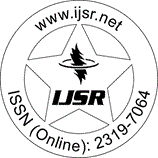Downloads: 127
India | Civil Engineering | Volume 8 Issue 6, June 2019 | Pages: 2127 - 2130
Design of Minor Canal from an Existing Parent Canal to Decrease Duty of Flow to Adjacent Areas
Abstract: Engineers try their utmost to get the design so that the flow is as high as possible and the minimum amount of scouring is possible. This research presents the channel design using Lacey's Design Method. This technique is used by many designing firms for their project design reasons. This project therefore deals primarily with the relative design and the outcomes acquired from the design of both a regular and an uneven schedule. The research topic was carried out on a detailed analysis on various parameters used while designing. The parameters such as volume of water flowing per unit length, catchment area, Soil type, water table etc. are taken on the basis of a particular location. The main problem faced nowadays is due to lack of discharge of water. This is due to some losses which are found by poor design of canals. In this project I will rectify this problem by providing lining to canal so as to save seepage and other losses while flow of water through the canal. In addition to this I will also make such a design which will require less surface area and will provide more discharge.
Keywords: Design of canal, Laceys application in design
How to Cite?: Anupama Singh, "Design of Minor Canal from an Existing Parent Canal to Decrease Duty of Flow to Adjacent Areas", Volume 8 Issue 6, June 2019, International Journal of Science and Research (IJSR), Pages: 2127-2130, https://www.ijsr.net/getabstract.php?paperid=ART20199153, DOI: https://dx.doi.org/10.21275/ART20199153
